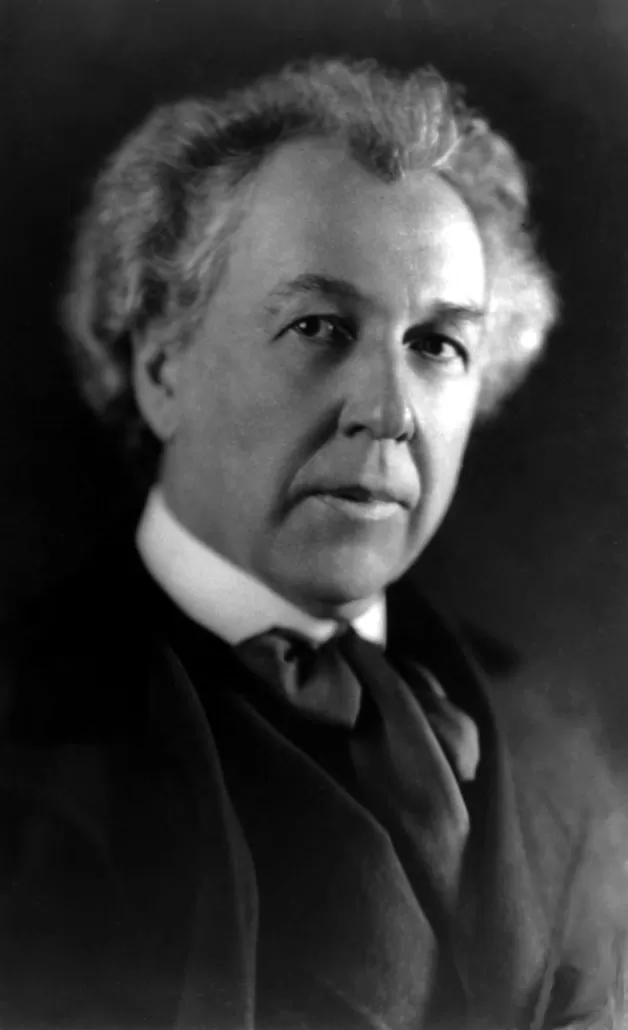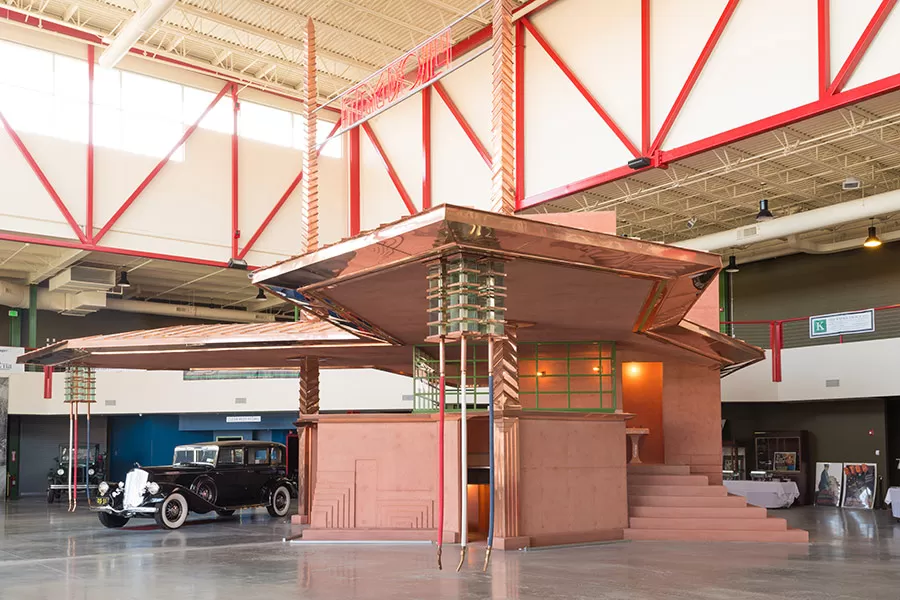A Frank Lloyd Wright Gas Station
by Kate Nixon
Editor’s note: the article has been corrected to show the correct spelling of the Minnesota city as Cloquet, not Cloquette.
Fallingwater. Robie House. Taliesin West. A Service Station in Cloquet, Minnesota. Confused at that last part? Trust me, I get it.
In talking with someone with an impressive amount of knowledge on the houses of Frank Lloyd Wright a few weeks ago, I learned something about Frank Lloyd Wright that simultaneously seemed like a rumor, but also a tribute to the wide range of influence of Frank Lloyd Wright. “There’s a Frank Lloyd Wright gas station in Cloquet, Minnesota.” I stopped listening for a few seconds as I thought “What?” and followed with a “I’m sorry. What was that?” over the phone. He chuckled. I’m sure he was used to that reaction.

Frank Lloyd Wright in 1926. In 1927, he started work on a plan for a structure that he had intende to be a gas station. Two gas stations would be built in his style: he designed and built one for a client in Cloquette, Minnesota and the other was built in 2013 as part of the Pierce-Arrow Museum in Buffalo, New York – the city where he originally pictured his Utopian version.
A few images came to mind, but a Google search and a few websites verified – with pictures – a gas station in the style of Frank Lloyd Wright. It’s true. In 1927, Frank Lloyd Wright designed an idea for a gas station with the city of Buffalo, New York in mind. While Wright had the idea and plan much earlier, two structures would be built: one is a functioning gas station that came to being in his lifetime was built in Cloquet, Minnesota – and still stands to this day. There were two reasons behind the decision to build a gas station.

A recent image of the Lindholm Service Station, designed by Frank Lloyd Wright, was intended for Buffalo, New York. It came to fruition in Cloquette, Minnesota. Photo courtesy of Wikimedia Commons.
The R.W. Lindholm Station served two purposes: 1) a fully functional gas station built in the later years of Wright’s life for one of his clients Ray Lindholm (who was in the oil business) and 2) to be one part of a larger plan to build Frank Lloyd Wright’s own version of Utopia: Broadacre City. Wright approached Lindholm with the idea — and since Lindholm wanted to expand the idea of what a gas station could be, a brilliant plan was hatched. The station – costing far more than the construction of a typical gas station at that time – opened in 1958 with Lindholm’s name. Wright wanted his gas stations to function as a communal center and fuel center – only half of that dream came true. While it never took as a social center, it served automobile owners and later became a provider of Phillips 66 gas.

The R.W. Lindholm station as a function gas station selling Phillips 66 gas. Photo courtesy of the Library of Congress Historic American Buildings Survey/Historic American Engineering Record/Historic American Landscapes Survey
As mentioned before, the Lindholm station not only functions to his day – it was added to the National Register of Historic Places in 1985. The cantilevered copper canopy is the most obvious Wright influence, but in Wright’s utopian version, he wanted to store the gas in the canopy with the pumps overhead to maximize on space. The safety regulations in place however wouldn’t allow for that idea — and Wright turned to the ground based pumps instead. Just below the canopy and off to the right, an observation lounge with glass walls: Wright intended this area for social gatherings in the hopes that the space would serve both functions. Great idea in theory.
Wright’s utopian idea was brought to life in 2013 as Buffalo’s transportation museum created an installation of his gas station. Is it functional? Nope. But you can see the Wright influence below.

The installation on view at Buffalo’s transportation museum: The Pierce-Arrow Museum. Based on Frank Lloyd Wright’s vision of a gas station in his perfect city of Broadacre, this vision has come off the drawings into reality – just not as a functional gas station. Photo: MetropolitanMag.com.
Until next time,
“It is clear from his own writings and those of his contemporaries that he did not consider democracy to be a form of government so much as a way of living.” – Lionel March, “Writings on Wright”
Kate
